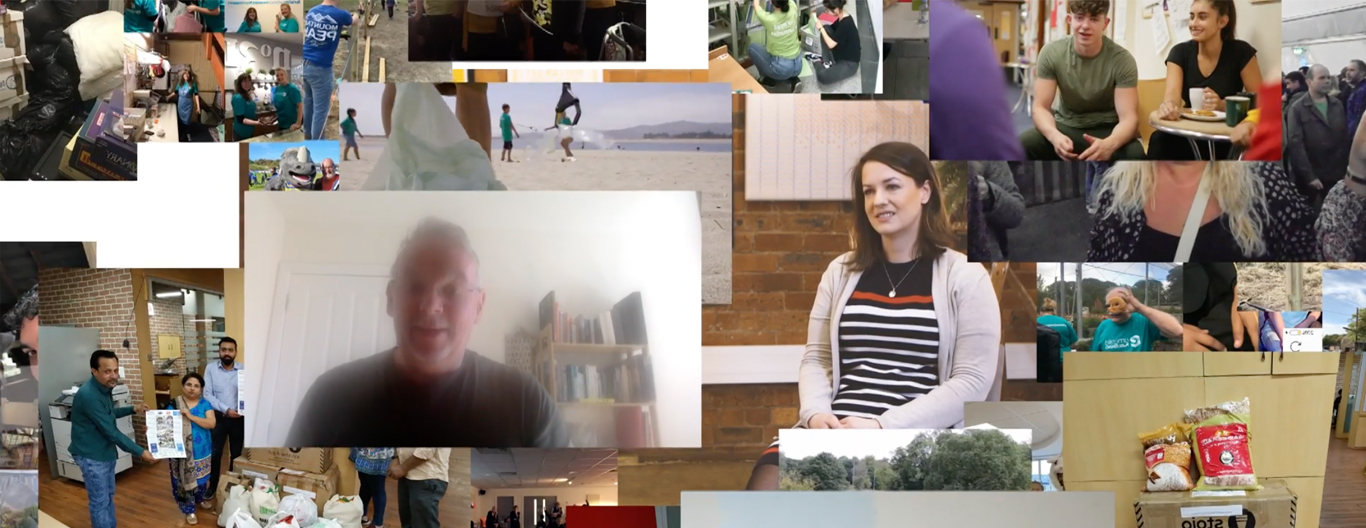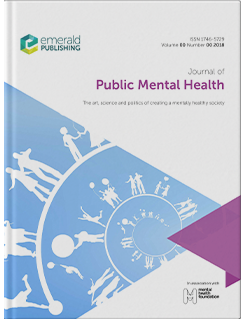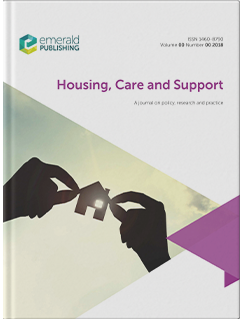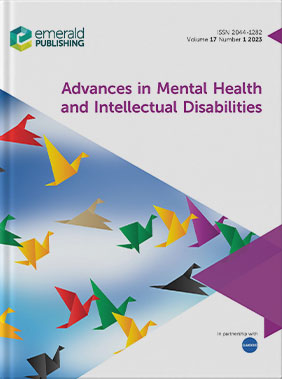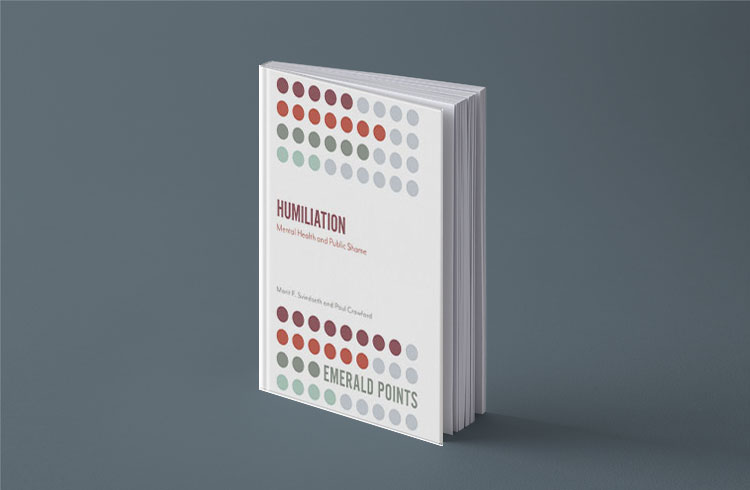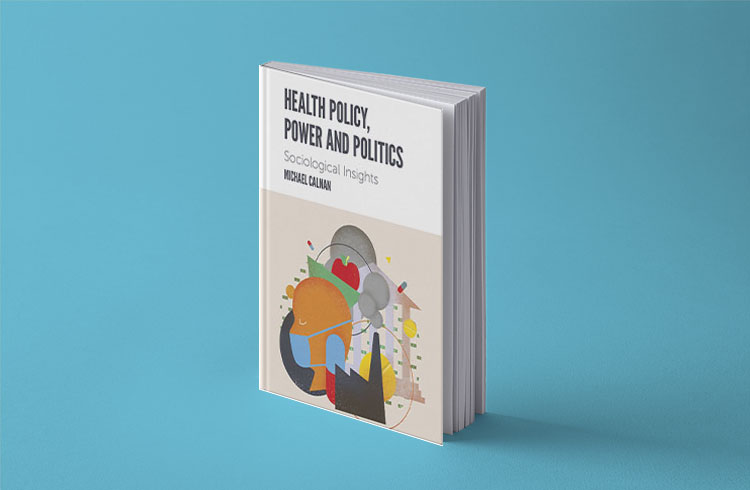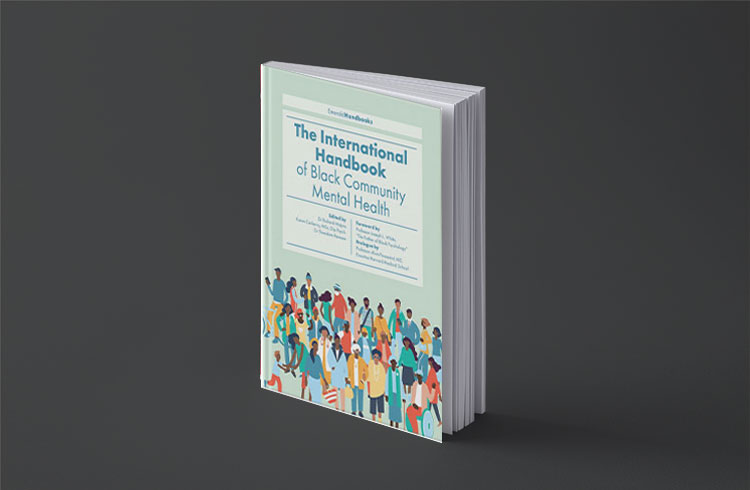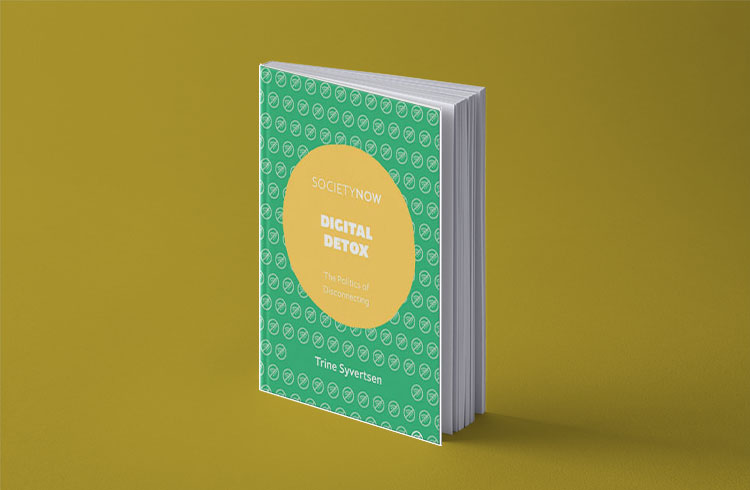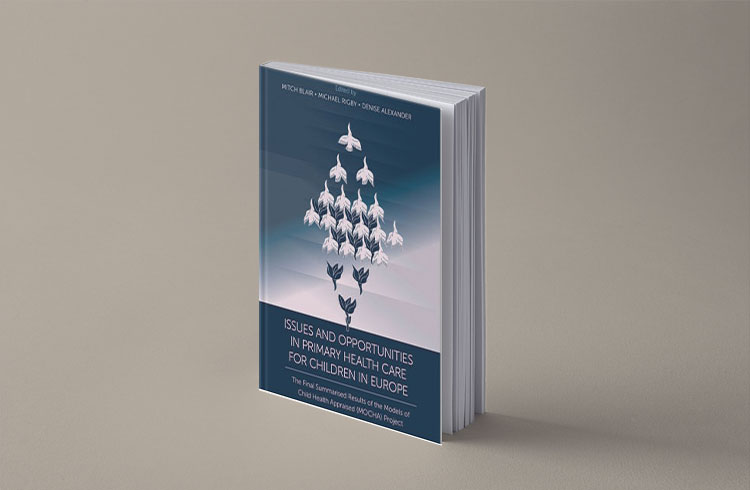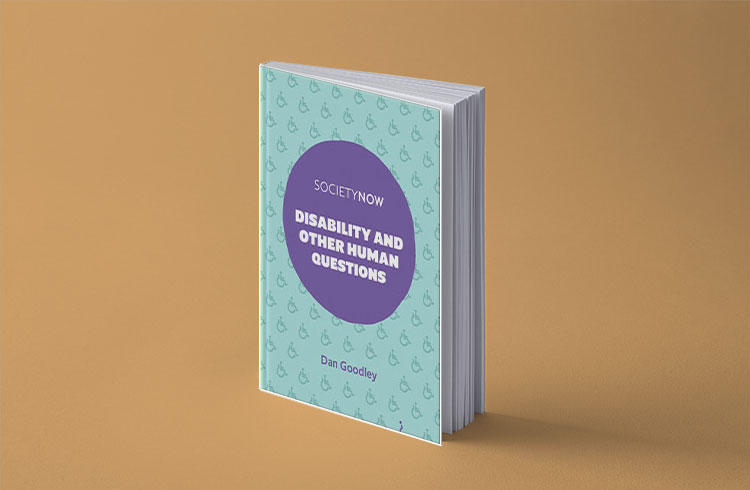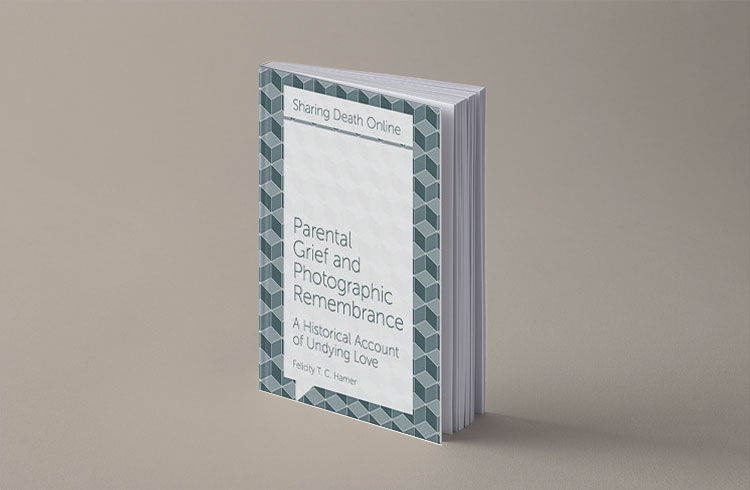Promoting positive mental health & avoiding burnout.
In these challenging times we believe that now, more than ever, it’s important to stay connected in any way we can. At a time when the future is uncertain and we can feel disconnected, the smallest act can have the biggest effect. Kindness Matters.
At Emerald, we believe that protecting our mental health and wellbeing is going to be crucial to coping with, and recovering from, the COVID-19 pandemic, with the psychological and social impacts likely to outlast the physical symptoms of the virus.
We are aware that people may struggle with the pressure of continuing to try and lead a ‘normal’ life, and this could lead to the effect known as burnout. To help you understand more about this and support you during this time, we’ve selected a number of articles on the subject accompanied by videos from the authors, as well as interviews from people in the sports and entertainment industries to get their viewpoints on the personal and professional effects it’s having on their lives. Our sister company has kindly shared some resources on this subject too.
If you are interested in contributing to the discussion or simply want to discuss your research ideas then take a look at our different routes to publication.
Mental Health Awareness Week 2020
The theme for this Mental Health Awareness Week 2020 is 'kindness' and, during this time, we’re focusing on the theme 'Kindness matters' which we are using to promote positive mental health and avoiding burnout.
We want to help you and provide you with research and information during this time.
Generating mutual recovery in creative spaces
Victoria Stewart, Helena Roennfeldt, Maddy Slattery, Amanda J. Wheeler
Mental Health and Social Inclusion
Kindness among colleagues; identifying and exploring the gaps in employment contexts
Stephen Gibb, Shama Rahman
International Journal of Organizational Analysis
Examining burnout in employed university students
Kristin M. Schramer, Carolyn M. Rauti, Arief B. Kartolo, Catherine T. Kwantes
Journal of Public Mental Health
Social support, depressive symptoms, and online gaming network communication
Tyler Prochnow, Megan S Patterson, Logan Hartnell
Mental Health and Social Inclusion
Blog post by Logan Hartnell
Be empathetic, be compassionate, be kind

Routes to publication
As you interested in taking part in the discussion on how to promote positive mental health and wellbeing during these times?
Take a look below at your different routes to publication with us, and contact us to get involved.
Publish open access
Publish your work on Emerald Open Research, our open access platform that supports an open data policy and open peer review process.
The Healthy Lives gateway aims to address promoting mental and physical wellbeing and recognising the wider implications that this has on society and the economy.
Quite often, the way we feel about a situation comes from our perception of it. Often that perception is right, but sometimes it isn't.
For instance, sometimes we're unreasonably harsh with ourselves, or we can jump to wrong conclusions about people's motives. This can cause problems and make us unhappy, and it can lead us to be unfair to others.
Positive thinking, thought awareness, and rational thinking are simple tools that help you turn this around.
Introduction
A commonly accepted definition of stress, developed by Richard S. Lazarus in his book "Psychological of Stress and the Coping Process," is that it occurs when someone thinks that the demands on them "exceed the personal and social resources that the individual is able to mobilize."
In becoming stressed, people must make two main judgments:
- They must feel threatened by the situation
- They must judge whether their capabilities and resources are sufficient to meet the threat.
How stressed someone feels depends on how much damage they think the situation can cause them, and how far their resources meet the demands of the situation.
Perception is key to this as (technically) situations are not stressful in their own right. Rather it's our interpretation of the situation that drives the level of stress that we feel. Quite obviously, sometimes we are right in what we say to ourselves. Some situations may actually be dangerous, and may threaten us physically, socially, or in our career. Here, stress and emotion are part of the "early warning system" that alerts us to the threat from these situations.
Very often, however, we are overly harsh and unjust to ourselves, in a way that we would never be with friends or team members. This, along with other negative thinking, can cause intense stress and unhappiness, and can severely undermine our self-confidence.
Warning:
Stress can cause severe health problems and, in extreme cases, death. While these stress management techniques have been shown to have a positive effect on reducing stress, they are for guidance only, and readers should take the advice of suitably qualified health professionals if they have any concerns over stress-related illnesses or if stress is causing significant or persistent unhappiness. Health professionals should also be consulted before any major change in diet or levels of exercise.
Three steps to positive thinking
1. Understanding thought awareness
You're thinking negatively when you fear the future, put yourself down, criticize yourself for errors, doubt your abilities, or expect failure. Negative thinking damages your confidence, harms your performance, and paralyzes your mental skills.
A major problem with this is that negative thoughts tend to flit into our consciousness, do their damage and flit back out again, with their significance having barely been noticed. Since we do not challenge them, they can be completely incorrect and wrong. However, this does not diminish their harmful effect.
Thought Awareness is the process by which you observe your thoughts and become aware of what is going through your head.
One way to become more aware of your thoughts is to observe your stream of consciousness as you think about a stressful situation. Do not suppress any thoughts: instead, just let them run their course while you watch them, and write them down on our free worksheet as they occur.
Another more general approach to Thought Awareness comes with logging stress in a Stress Diary. One of the benefits of using a Stress Diary is that, for one or two weeks, you log all of the unpleasant things in your life that cause you stress. This will include negative thoughts and anxieties, and can also include difficult or unpleasant memories and situations that you perceive as negative.
By logging your negative thoughts for a reasonable period of time, you can quickly see patterns in your negative thinking. When you analyze your diary at the end of the period, you should be able to see the most common and most damaging thoughts. Tackle these as a priority.
Thought awareness is the first step in the process of managing negative thoughts, as you can only manage thoughts that you're aware of.
2. Developing rational thinking
The next step in dealing with negative thinking is to challenge the negative thoughts that you identified using the Thought Awareness technique. Look at every thought you wrote down and rationally challenge it. Ask yourself whether the thought is reasonable, and does it stand up to fair scrutiny?
As an example, by analyzing your Stress Diary you might identify that you have frequently had the following negative thoughts:
- Feelings of inadequacy.
- Worries that your performance in your job will not be good enough.
- An anxiety that things outside your control will undermine your efforts.
- Worries about other people's reactions to your work.
Starting with these, you might challenge these negative thoughts in the ways shown:
- Feelings of inadequacy: Have you trained and educated yourself as well as you reasonably should to do the job? Do you have the experience and resources you need to do it? Have you planned, prepared and rehearsed appropriately? If you've done all of this, then you've done everything that you should sensibly do. If you're still worried, are you setting yourself unattainably high standards for doing the job?
- Worries about performance: Do you have the training that a reasonable person would think is needed to do a good job? Have you planned appropriately? Do you have the information and resources that you need? Have you cleared the time you need, and cued up your support team appropriately? Have you prepared thoroughly? If you haven't, then you need to do these things quickly. If you have, then you are well-positioned to give the best performance that you can.
- Problems with issues outside your control: Have you conducted appropriate contingency planning? Have you thought through and managed all likely risks and contingencies appropriately? If so, you will be well prepared to handle potential problems.
- Worry about other people's reactions: If you have put in good preparation, and you do the best you can, then that is all that you need to know. If you perform as well as you reasonably can, and you stay focused on the needs of your audience, then fair people are likely to respond well. If people are not fair, then this is something outside your control.
Tip:
Don't make the mistake of generalizing a single incident. OK, you made a mistake at work, but that doesn't mean that you're bad at your job.
Similarly, make sure you take the long view about incidents that you're finding stressful. Just because you're finding new responsibilities stressful now, doesn't mean that they will always be stressful in the future.
Often, the best thing to do is to rise above unfair comments. Write your rational response to each negative thought in the Rational Thought column on the worksheet.
Tip:
If you find it difficult to look at your negative thoughts objectively, imagine that you are your best friend or a respected coach or mentor. Look at the list of negative thoughts. Imagine that they were written down by someone you were giving objective advice to, and think about how you'd challenge these thoughts.
When you challenge negative thoughts rationally, you should be able to see quickly whether the thoughts are wrong, or whether they have some substance to them. Where there is some substance, take appropriate action. In these cases, negative thinking has given you an early warning of action that you need to take.
3. Positive thinking exercises
Where you have used Rational Thinking to challenge incorrect negative thinking, it's often useful to use rational, positive thoughts and affirmations to counter them. It's also useful to look at the situation and see if there are any opportunities that are offered by it.
Affirmations help you to build self-confidence. By basing your affirmations on the clear, rational assessments of facts that you made using Rational Thinking, you can undo the damage that negative thinking may have done to your self-confidence.
Tip:
Your affirmations will be strongest if they are specific, are expressed in the present tense, and have strong emotional content.
Continuing the examples above, positive affirmations might be:
- Feelings of inadequacy: "I am well trained for this. I have the experience, the tools, and the resources that I need. I have thought-through and prepared for all possible issues. I can do a really good job."
- Worries about performance: "I have researched and planned well for this, and I thoroughly understand the problem. I have the time, resources and help that I need. I am well prepared to do an excellent job."
- Problems with issues outside your control: "We have thought about everything that might reasonably happen, and have planned how we can handle all likely contingencies. Everyone is ready to help where necessary. We are very well placed to react flexibly and effectively to unusual events."
- Worry about other people's reaction: "I am well-prepared and am doing the best I can. Fair people will respect this. I will rise above any unfair criticism in a mature and professional way."
If appropriate, write these affirmations down on your worksheet, so that you can use them when you need them.
As well as allowing you to structure useful affirmations, part of Positive Thinking is to look at opportunities that the situation might offer to you and your team. In the examples above, successfully overcoming these situations will open up opportunities. You'll gain new skills, you'll be seen as someone who can handle difficult challenges, and you may open up new career opportunities.
Make sure that you take the time to identify these opportunities and focus on them as part of your positive thoughts.
Tip:
In the past, people have advocated thinking positively almost recklessly, as if it is a solution to everything. The approach should be used with common sense, though. First, decide rationally what goals you can realistically attain with hard work, and then use positive thinking to reinforce these.
Key points
This set of tools helps you to manage and counter the stress of negative thinking.
Thought Awareness helps you identify the negative thinking, unpleasant memories, and misinterpretation of situations that may interfere with your performance and damage your self-confidence. This allows you to deal with them.
Rational Thinking helps you to challenge these negative thoughts and either learn from them, or refute them as incorrect.
You can then use Positive Thinking to create positive affirmations that you can use to counter negative thoughts. These affirmations neutralize negative thoughts and build your self-confidence. You can also use this approach to find the opportunities that are almost always present, to some degree, in a difficult situation.
References
Lazarus, R. (1966). 'Psychological Stress and the Coping Process,' New York: McGraw-Hill.
© Mind Tools from Emerald Works Limited 2020. All rights reserved.
“Empathy is like a universal solvent. Any problem immersed in empathy becomes soluble.”
–Simon Baron-Cohen, British clinical psychologist, and professor of developmental psychopathology, University of Cambridge, U.K.
Understanding other people's emotions is a key skill in the workplace. It can enable us to resolve conflicts, to build more productive teams, and to improve our relationships with co-workers, clients and customers.
But, while most of us are confident about learning new technical skills, we may feel ill-equipped to develop our interpersonal skills. And many people are self-conscious about discussing their own feelings, never mind anyone else's!
In this article, we explore what it really means to show empathy. We'll look at how a few simple actions can help us to create stronger connections, to build a culture of honesty and openness, and to make a real difference to the emotional well-being, and productivity, of our colleagues.
What Is empathy?
In its simplest form, empathy is the ability to recognize emotions in others, and to understand other people's perspectives on a situation. At its most developed, empathy enables you to use that insight to improve someone else's mood and to support them through challenging situations.
Empathy is often confused with sympathy, but they are not the same thing. Sympathy is a feeling of concern for someone, and a sense that they could be happier. Unlike empathy, sympathy doesn't involve shared perspective or emotions.
You can feel sympathy for someone you see in tears in the street, for example, without knowing anything about their situation. Sympathy may develop into empathy, but doesn't necessarily do so.
According to influential psychologist Daniel Goleman, empathy is one of the five key components of emotional intelligence – a vital leadership skill. It develops through three stages: cognitive empathy, emotional empathy and compassionate empathy. We discuss each stage in turn, below.
Tip:
Find out how emotionally intelligent you are by taking our emotional intelligence quiz.
And Mind Tools Premium club members and Corporate users can listen to our exclusive interview with Daniel Goleman.
Cognitive empathy
Cognitive empathy is the ability to understand what another person might be thinking or feeling. It need not involve any emotional engagement by the observer.
Managers may find cognitive empathy useful in understanding how their team members are feeling, and therefore what style of leadership would get the best from them today. Similarly, sales executives can use it to gauge the mood of a customer, helping them to choose the most effective tone for a conversation.
Cognitive empathy is a mostly rational, intellectual, and emotionally neutral ability. This means that some people use it for negative purposes. For example, those with a Machiavellian personality trait may use cognitive empathy to manipulate people who are emotionally vulnerable.
Emotional empathy
Emotional empathy is the ability to share the feelings of another person, and so to understand that person on a deeper level. It's sometimes called "affective empathy" because it affects or changes you. It's not just a matter of knowing how someone feels, but of creating genuine rapport with them.
For some of us, this kind of empathy can be overwhelming. People with strong empathic tendencies can become immersed in other people's problems or pain, sometimes damaging their own emotional well-being. This is particularly true if they don't feel able to resolve the situation.
You can avoid this kind of emotional generosity burnout by taking breaks, checking your boundaries, and strengthening your ability to cope in such a demanding role.
Anyone leading a team will benefit from developing at least some emotional empathy. It helps to build trust between managers and team members, and to develop honesty and openness. But empathy is most valuable when it's combined with action.
Compassionate empathy
Compassionate empathy is the most active form of empathy. It involves not only having concern for another person, and sharing their emotional pain, but also taking practical steps to reduce it.
For example, imagine that one of your team members is upset and angry because he or she delivered an important presentation badly. Acknowledging their hurt is valuable, and affirming their reaction by showing signs of those feelings yourself even more so. But best of all is putting aside some time for them, and offering practical support or guidance on getting through the situation and preparing for next time.
How to develop empathy at work
You may struggle to show empathy initially – you could be nervous about committing yourself emotionally, or feel unable to do so. But this doesn't mean that you're doomed to fail!
To use empathy effectively, you need to put aside your own viewpoint and see things from the other person's perspective. Then, you can recognize behavior that appears at first sight to be over emotional, stubborn, or unreasonable as simply a reaction based on a person's prior knowledge and experiences.
Practice the following techniques frequently so that they start to become second nature.
Give your full attention
Listen carefully to what someone is trying to tell you. Use your ears, eyes and "gut instincts" to understand the entire message that they're communicating.
Start with listening out for the key words and phrases that they use, particularly if they use them repeatedly. Then think about how as well as what they're saying. What's their tone or body language telling you? Are they angry, ashamed or scared, for example?
Take this a stage further by listening empathically. Avoid asking direct questions, arguing with what is being said, or disputing facts at this stage. And be flexible – prepare for the conversation to change direction as the other person's thoughts and feelings also change.
Tip:
See our article, Mindful Listening, to find out how you can keep your focus on the other person despite the "noise" of your own thoughts and feelings.
Consider other people's perspectives
You're likely familiar with the saying, "Before you criticize someone, walk a mile in their shoes." Examine your own attitude, and keep an open mind. Placing too much emphasis on your own assumptions and beliefs doesn't leave much space for empathy!
Once you "see" why others believe what they believe, you can acknowledge it. This doesn't mean you have to agree with it, but this is not the time for a debate. Instead, be sure to show respect and to keep listening.
When in doubt, invite the person to describe their position some more, and ask how they think they might resolve the issue. Asking the right questions is probably the simplest and most direct way to understand the other person.
Tip:
You can explore a powerful five-step approach for seeing other points of view with our article, Perceptual Positions.
Take action
There's no one "right way" to demonstrate your compassionate empathy. It will depend on the situation, the individual, and their dominant emotion at the time. Remember, empathy is not about what you want, but what the other person wants and needs, so any action you take or suggest must benefit them.
For example, you might have a team member who's unable to focus on their work because of a problem at home. It may seem the kind thing to do to tell them they can work from home until the situation is resolved, but work may in fact give them a welcome respite from thinking about something painful. So ask them which approach they would prefer.
And remember that empathy is not just for crises! Seeing the world from a variety of perspectives is a great talent – and it's one that you can use all of the time, in any situation. And random acts of kindness brighten anyone's day.
For example, you likely smile and take the trouble to remember people's names: that's empathy in action. Giving people your full attention in meetings, being curious about their lives and interests, and offering constructive feedback are all empathic behaviors, too.
Practice these skills often. When you take an interest in what others think, feel and experience, you'll develop a reputation for being caring, trustworthy and approachable - and be a great asset to your team and your organization.
Key points
Empathy is the ability to recognize emotions and to share perspectives with other people. It's one of the five key components of emotional intelligence, and it helps to build trust and strengthen relationships.
There are three stages of empathy:
- Cognitive empathy is being aware of the emotional state of another person.
- Emotional empathy is engaging with and sharing those emotions.
- Compassionate empathy involves taking action to support other people.
To use empathy effectively, give your co-worker your full attention, looking out for verbal and nonverbal clues to help you fully understand their situation. Set aside your own assumptions, acknowledge your colleague's feelings, allow an emotional connection, then take positive action that will improve their well-being.
© Mind Tools from Emerald Works Limited 2020. All rights reserved.
Imagine that you're having a particularly stressful day, and everything seems to be going wrong.
You have a number of important deadlines due, several members of your team have called in sick, and you've just found out that you have to make a presentation to the board – tomorrow.
When you have to deal with situations like these, your heart may race, your breathing may become fast and shallow, and you could even feel that you can't cope with the task at hand. These feelings are the result of your body going through sudden changes as it prepares to deal with a perceived threat – this is the famous "fight-or-flight" response.
All of us experience this occasionally, and, for some, it can be a regular occurrence. While a small amount of pressure can help you focus and improve your performance, too much short-term stress hinders your ability to work well. This is why it's useful to know some techniques that can help you relax.
You can use these techniques whenever you're feeling stressed or tense. For example, you can use them to relax before a presentation or performance; you can use them to clear your mind, so that you can solve problems creatively; or you can use them to compose yourself before a job interview. Using these techniques regularly can help you to maintain a relaxed and calm state of mind.
In this article, we'll look at deep breathing, progressive muscular relaxation, and centering – three physical techniques that can help you reduce muscle tension and manage the effects of your body's fight-or-flight response. This is particularly important if you need to think clearly and perform well when you're under pressure.
Warning:
Stress can cause severe health problems and, in extreme cases, death. While these stress management techniques have been shown to have a positive effect on reducing stress, they are for guidance only, and readers should take the advice of suitably qualified health professionals if they have any concerns over stress-related illnesses or if stress is causing significant or persistent unhappiness. Health professionals should also be consulted before any major change in diet or levels of exercise.
Deep breathing
Deep breathing is a simple but effective method of relaxation. It is a core component of yoga and Zen meditation, as well as of the common approach of taking "10 deep breaths" to calm down. It works well in conjunction with other relaxation techniques – such as progressive muscular relaxation, relaxation imagery, and meditation – to reduce stress.
Many people spend much of their time breathing very shallowly, filling only the upper part of their chest with air. This shallow breathing limits the amount of oxygen that your body takes in, and it can also make you feel very anxious in times of stress. By contrast, deep breathing can decrease stress, lower your blood pressure, and slow your heart rate.
Deep breathing – also called diaphragmatic, or belly breathing – takes place when, instead of just breathing with your ribs, you breathe so that your lower belly expands.
When you breathe in this way, your diaphragm moves downward and pulls your lungs along with it. At the same time, it presses against your internal organs to make room for your expanding lungs. When you breathe out, your diaphragm pushes upward, helping your lungs expel carbon dioxide.
It's easy to start practicing deep breathing techniques. All you need to do is sit comfortably, take a slow, deep breath in through your nose, and focus on what feels like filling your lower belly with air.
Progressive muscular relaxation
Progressive muscular relaxation, or PMR, is useful for relaxing your body when your muscles are tense.
The idea behind PMR is that you tense up a group of muscles, so that they're tightly contracted. Hold them in a state of extreme tension for a few seconds, and then relax the muscles normally. Then, consciously relax your muscles even more. This process of moving from intense tension to deep muscular relaxation helps interrupt your body's fight-or-flight response when you're experiencing fear or stress.
Here are a few examples of ways to engage in progressive muscular relaxation. Hold each position for five seconds, and then relax. You might also find it helpful to breathe out slowly as you relax each pose, or even to whisper the word "relax" as you release your muscles.
- Raise your eyebrows as high as you can
- Close your eyes as tightly as possible and keep them shut for five seconds
- Open your mouth as wide as possible, as if you're yawning
- Hold your arms in front of you and clench your fists as tightly as possible
- Pull your shoulder muscles up toward your ears
- Bend your arms and tense your biceps as tightly as possible
- As you sit, pull your legs together and push your thighs together, tightening the thigh muscles as you push inward
- Tighten your abdominal muscles
- Curl your toes downwards as much as possible
What you'll find is that when you tense your muscles first, it's easier, then, to relax these muscles completely. When you try to relax your muscles without tensing them, you'll find that they don't relax as thoroughly.
Centering
Centering was developed from the Japanese martial art of Aikido. (Literally translated, "Aikido" means "the way of unifying life energy.") It's a method that you can use to channel nervous energy, increase your concentration, and remain stable and grounded in a stressful situation; and it combines physical and mental approaches to relaxation.
There are three basic steps that you can follow to become centered:
- Be aware of your breathing. Focus on your breathing. Breathe deeply and slowly, using your abdomen.
- Find your center. This is your physical center of gravity, which is usually just below your waist. Focusing on your center grounds you, and reminds you that you have balance and control when you start to feel stressed. Once you've found your center, focus your mind on it, and breathe deeply at least five times.
- Release your negative energy. Visualize all of your negative energy collecting in your center, and then moving up towards your eyes. Then, picture yourself thrusting all of this negative energy away from you, leaving yourself feeling calm and quiet.
It can take some practice to learn how to use centering, so it's a good idea to become familiar with it before you need to use it. You can find out more about it in our article on the technique.
Increasing the effectiveness of these techniques
As we looked at with centering, above, you can relax even more intensely by using mental techniques alongside physical ones.
In particular, you can use imagery to lower stress by imagining a peaceful, relaxing place – this works particularly well with deep breathing. You can also use physical techniques in conjunction with affirmations; these are positive thoughts that can help you change your thinking and attitude, and become more positive.
Lastly, regular exercise will also help you reduce your stress levels. Try to fit exercise into your day during your lunch break, after work, or even while you're at work.
For example, don't sit too long at your desk; get up and stretch, or go for a quick walk. Move around when you're on your lunch break, stand when you're on the phone, or visit a colleague in person, instead of using instant messaging or email. Any movement that you can work into your day will help to keep your energy up and your stress levels down.
Key Points
Deep breathing, progressive muscular relaxation, and centering are three useful techniques that you can use to relax your body and manage stress.
These techniques are particularly helpful for handling nerves prior to an important presentation or performance, and for helping you concentrate. However, you'll likely achieve the most relaxed state by using physical and mental techniques together.
References
Harvard Health Publications: Harvard Medical School (2012) 'Take a Deep Breath,' Harvard Mental Health Letter, May 2009. [Online] Available here. [Accessed November 6, 2012.]
Cuda, G. (2010) 'Just Breathe: Body has a Built-In Stress Reliever,' NPR Books. [Online] Available here. [Accessed November 6, 2012.]
© Mind Tools from Emerald Works Limited 2020. All rights reserved.

